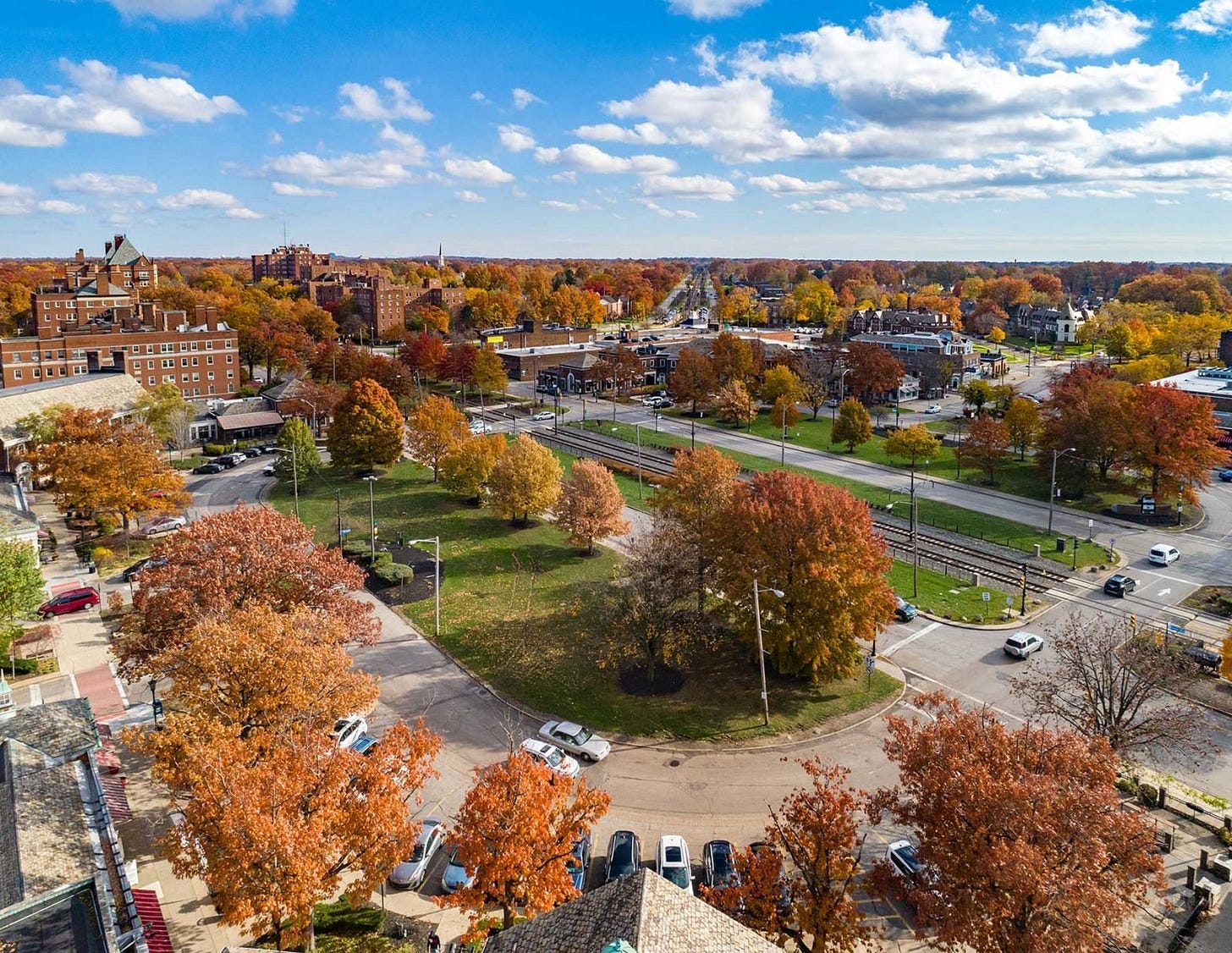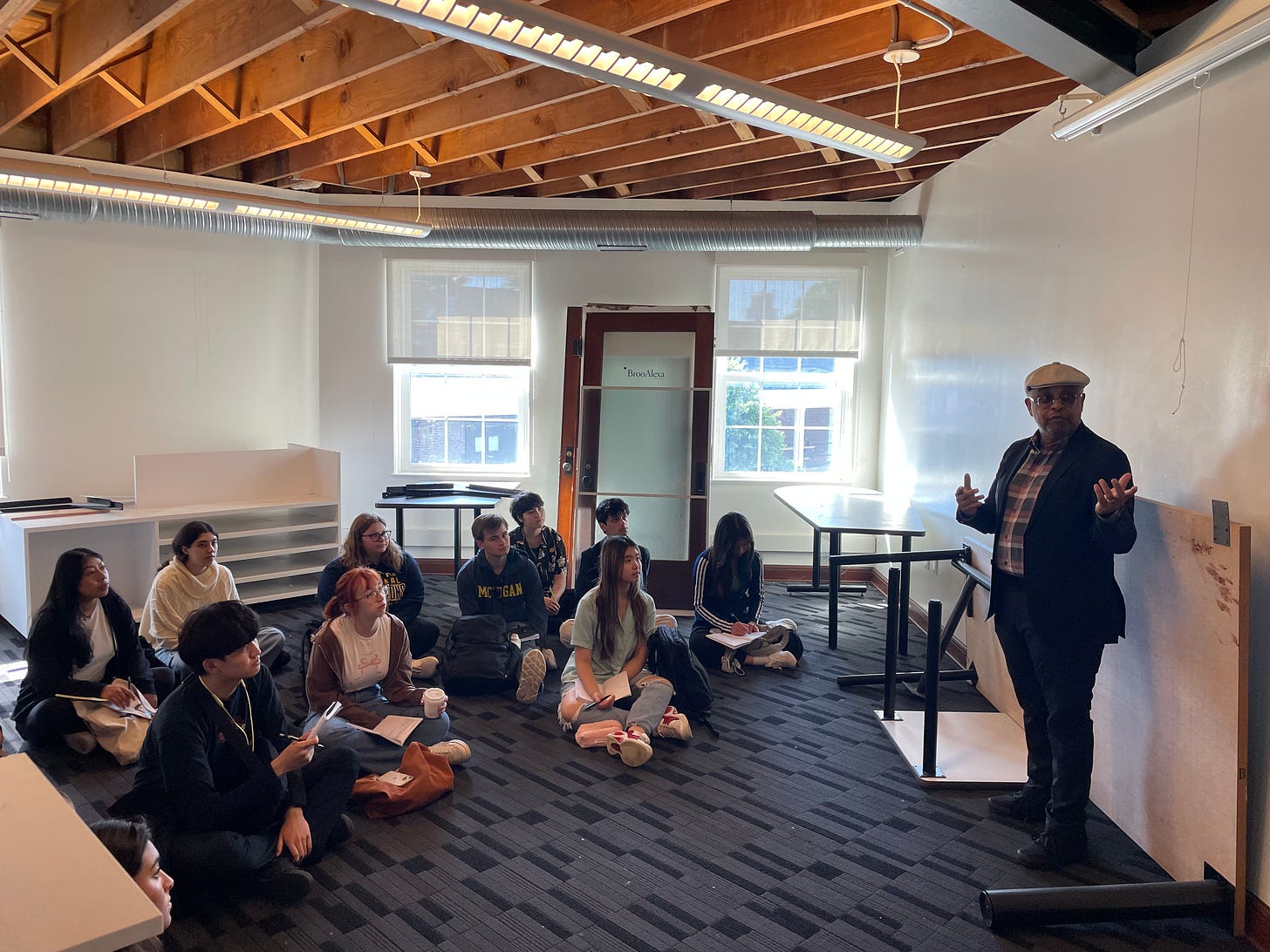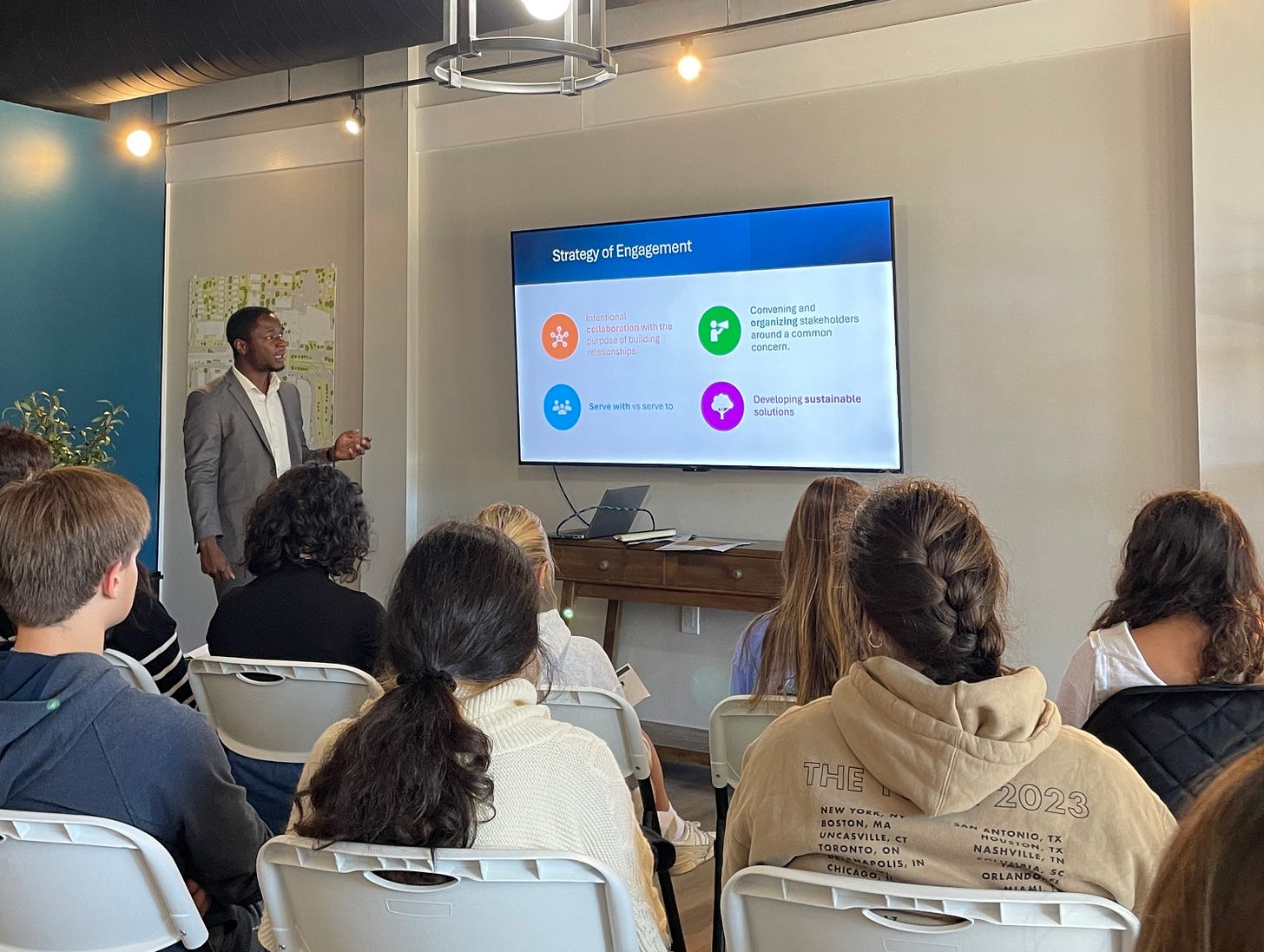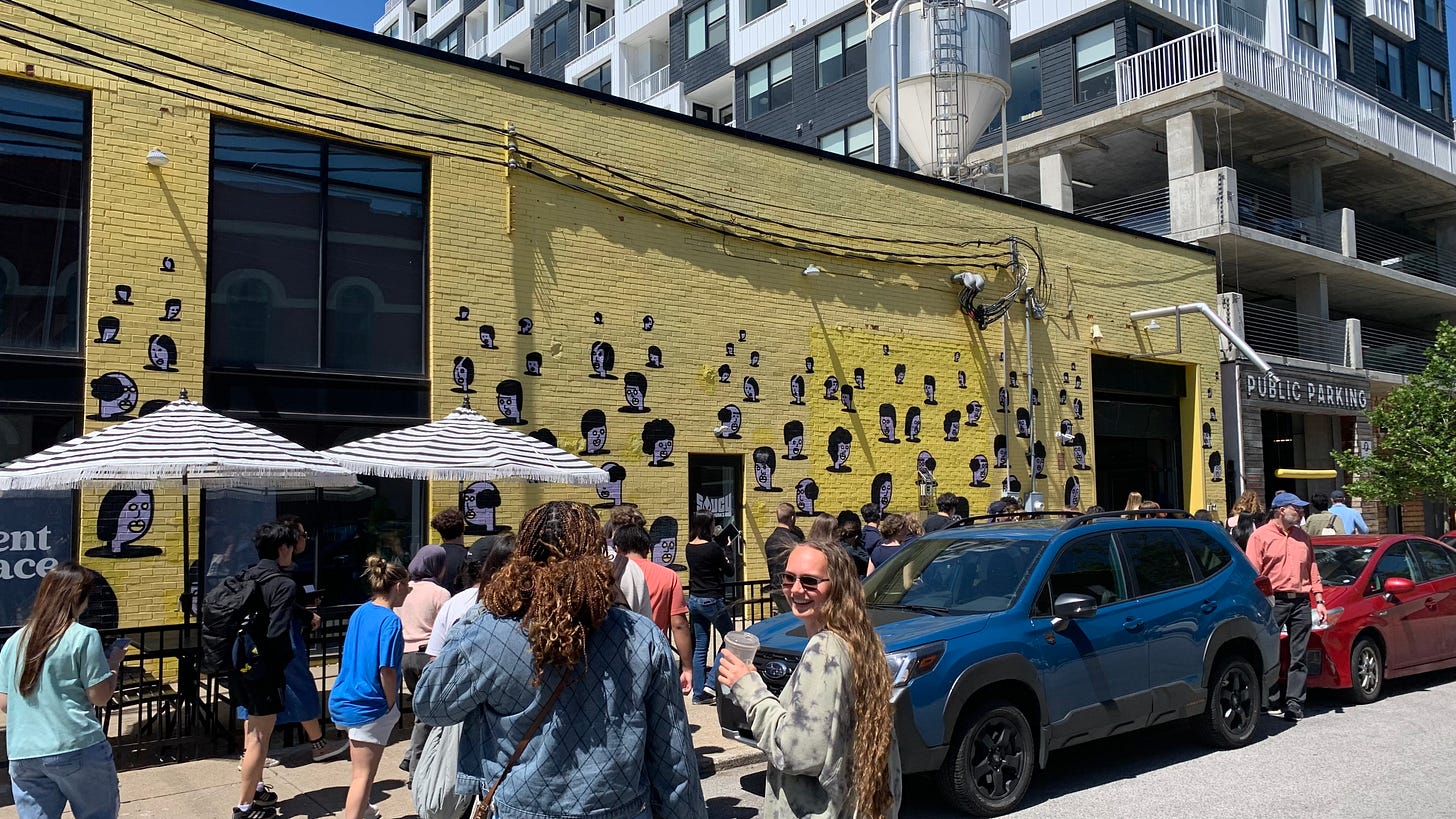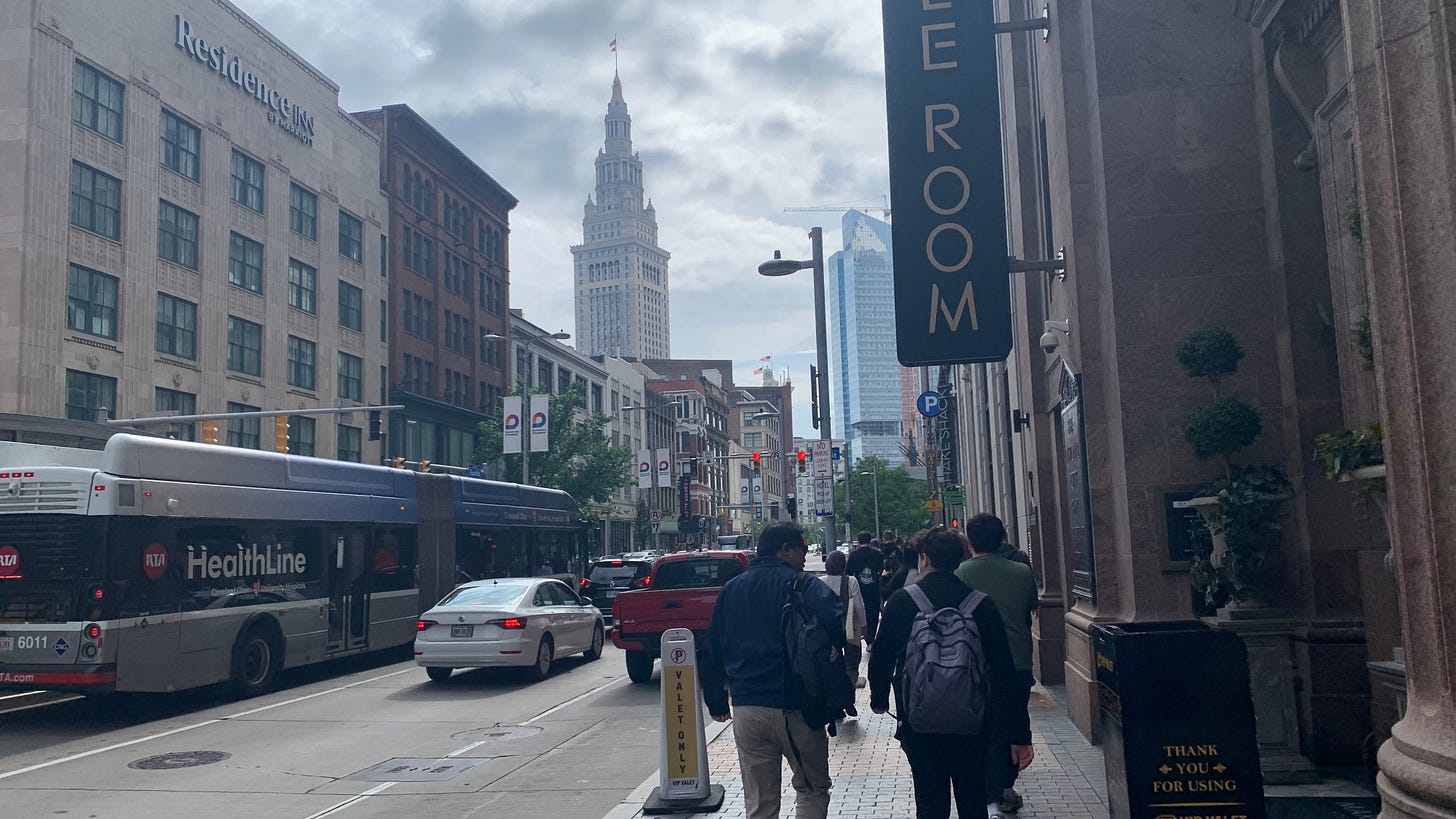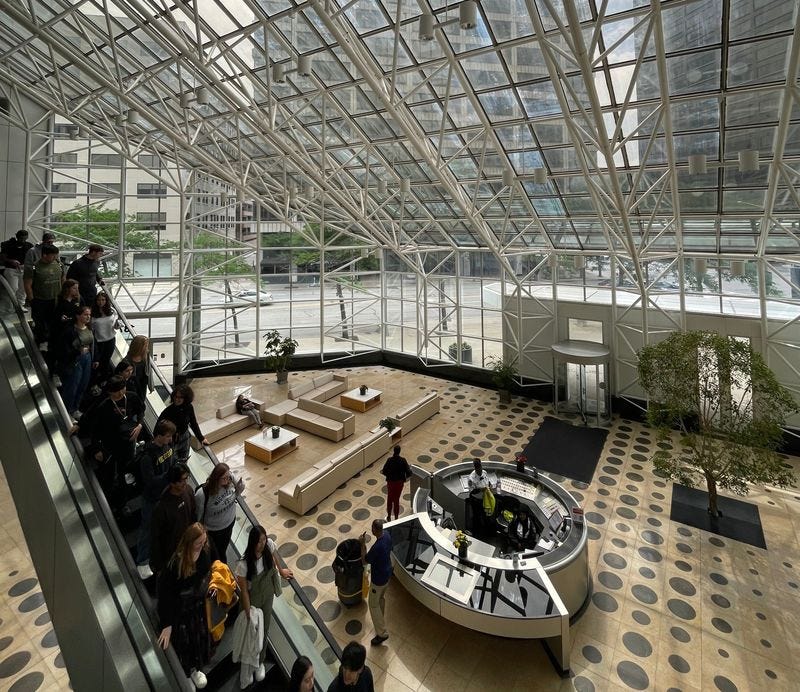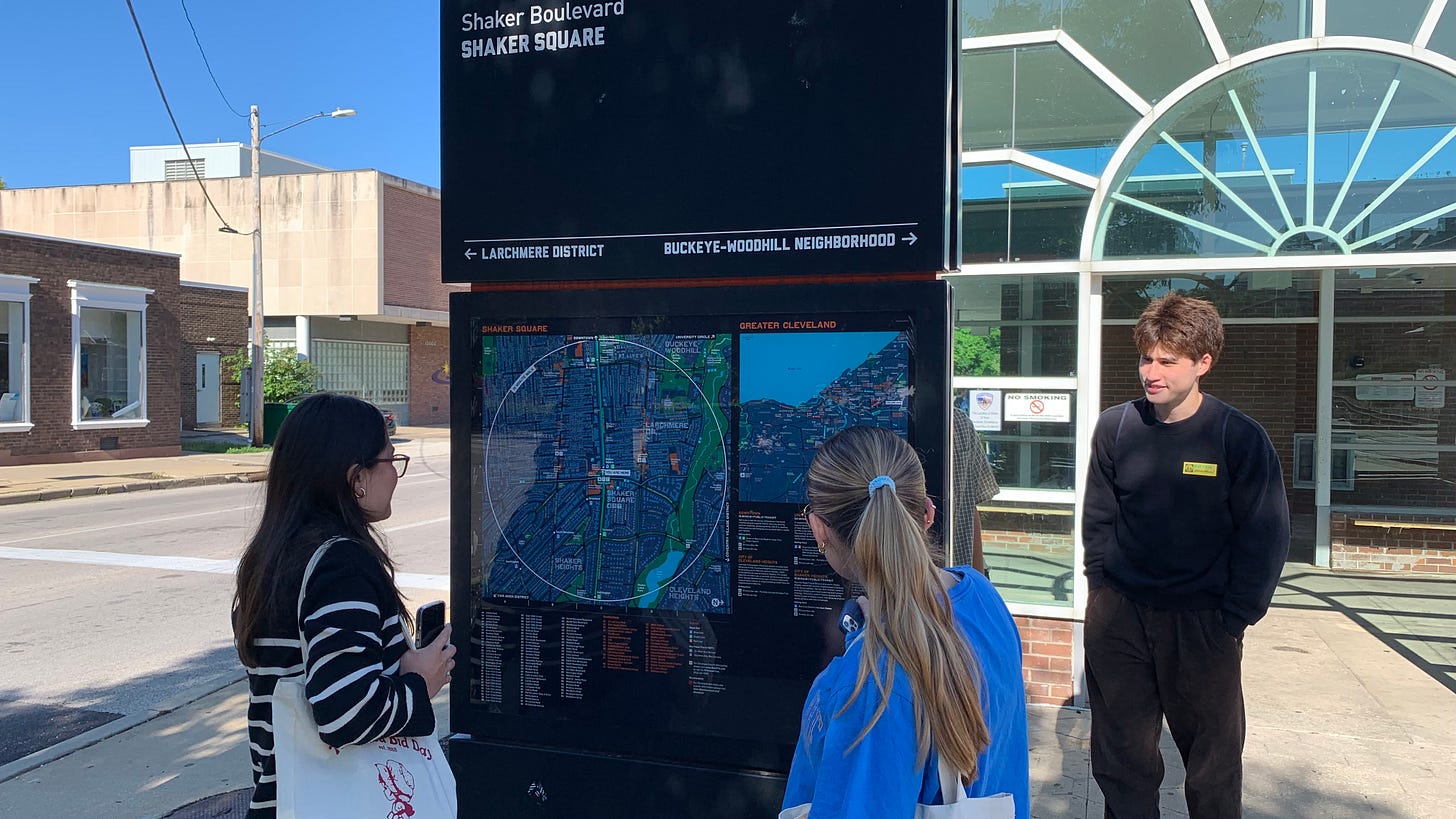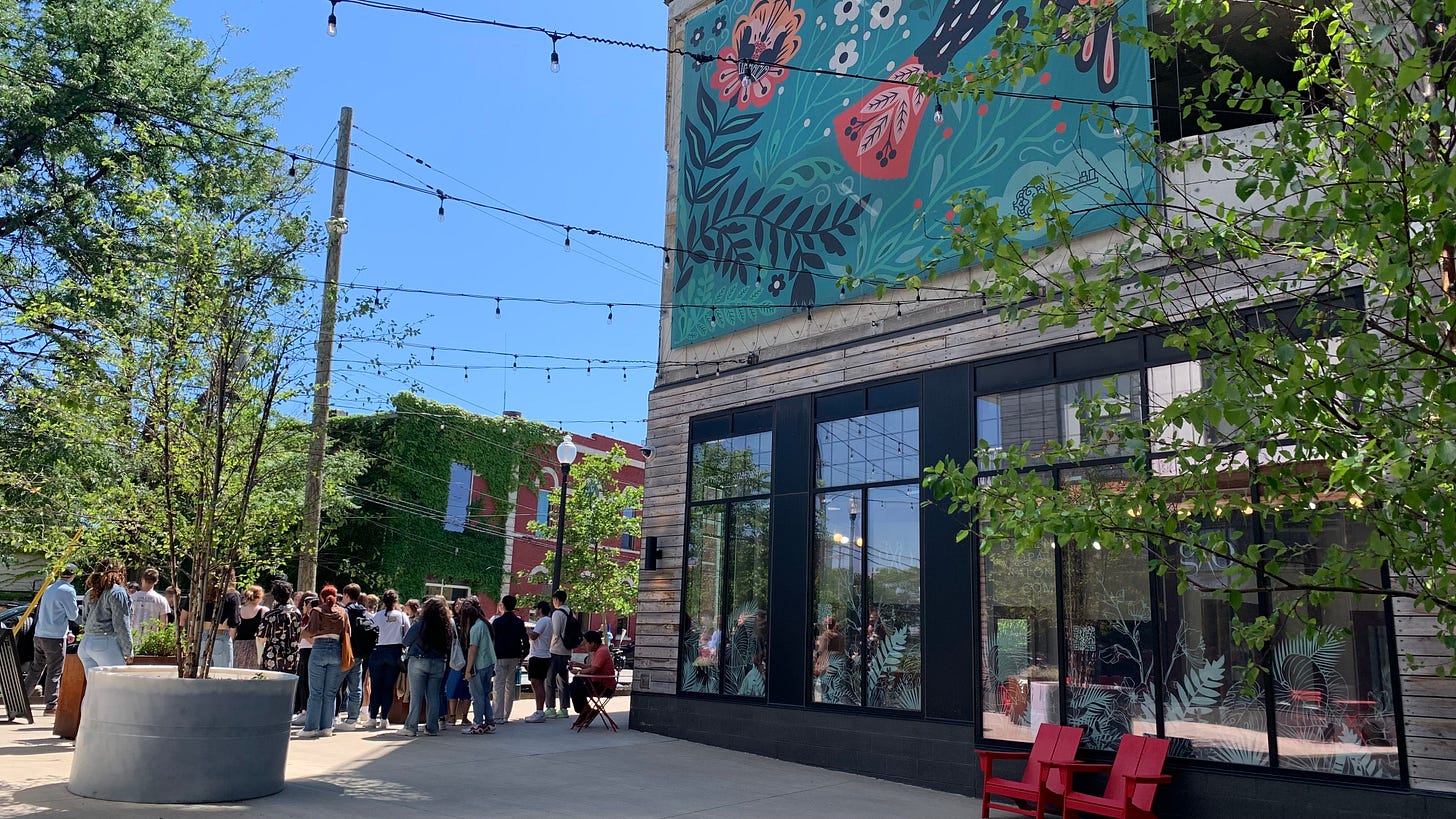Urban Technology at University of Michigan week 200
Urban Challenges, Scale, and Community-Building in Cleveland
As we reach the 200-week mark of this newsletter (!!), we also find ourselves at the midpoint of our 8-week Cities Intensive for new Urban Technology students. This week’s journey took us along Lake Erie to Cleveland, where students spent two days studying land use in a variety of environments and hearing from a mix of guest speakers alongside our co-instructors, Emily Kutil and Phil D’Anieri. Phil, who described our trip to Detroit a few weeks ago, is our guest writer again this week. In the midst of a metro area facing its fair share of challenges, he found himself inspired by the people who are addressing them. More from Phil below…
💬 Hello! This is the newsletter of the Urban Technology program at University of Michigan, in which we explore the ways that data, connectivity, computation, and automation can be harnessed to nurture and improve urban life. If you’re new here, try this short video of current students describing urban technology in their own words or this 90 second explainer video.
🌱 The Forest and the Trees
Cleveland has been known to refer to itself as “The Forest City,” apparently due to an early enthusiasm for cultivating fruit trees as an urban amenity. But in a pattern that is repeated across so many aspects of urban wellbeing, the city now pales in comparison to its suburban neighbors in tree canopy coverage, and the hardest hit areas of the city are those with higher percentages of low-income, minority residents.
In a warming world, the cool shade of urban trees is a public health concern as much as it’s an aesthetic one; this kind of deficit is both built on and continues to reinforce decades of inequity in metropolitan land use. New tools can help us understand those challenges in new ways — a presentation the first day of our trip introduced the Cuyahoga County Planning Commission’s Data Book, which organizes land usage data (and many other types of data) into visualizations that illuminate patterns across Cleveland and surrounding cities, including tree canopy coverage:
We can’t talk about The Anatomy of the City, the name of the course I teach, without understanding these kinds of structures and patterns in the metropolitan environment — where they come from, what they look like on the ground, where the levers of change may be. But I was reminded this week that, as important as it is to look at the macro-scale “forest” of urban space — a scale at which data can help reveal large trends — it’s essential to see the micro-scale “trees” as well: the places where everyday individuals are going about the patient, sustained work of community building.
Take Shaker Square, for example, an iconic shopping district just inside Cleveland’s eastern border.
It is a rich, interesting, complex place, in some respects a jewel in Cleveland’s crown, but also facing a series of daunting challenges. It’s currently under the stewardship of Cleveland Neighborhood Progress, a nonprofit that supports community development activities across the city. A huge part of that job is envisioning a future for Shaker Square that is both financially viable and sensitive to the needs of its neighbors. Those neighbors include residents of some of Cleveland’s most distressed neighborhoods on one side, and the wealthy, historic suburb of Shaker Heights on the other.
Our group heard from a variety of folks at Shaker Square, all of them operating in a nonprofit capacity. No one is getting rich trying to figure out the best way forward for this place, and they all spoke with lived experience of the deep challenges inherent in this kind of work. And yet they were passionately engaged in the challenge. They define success not just in the physical future of the place, but in the inclusiveness of whatever happens next. DaQuavion Roston, who leads community engagement for Burten, Bell, Carr Community Development Corporation, and August Fluker, a retired architect and member of the city’s planning commission, shared similar messages with our students: success in future years will be determined not by some architectural drawing, but by how engaged under-represented voices continue to be, and how collaborative the work is.
The challenge of it all — historical legacy bumping up against future imperatives — was a big part of what animated these individuals’ engagement, both with the site and with each other. To me it was a reminder that this is where city-building happens. Yes, it’s in the forest of trends and systems and structures. But it’s also in the trees of specific places and specific people, engaged in good-faith, public-spirited give-and-take, even as they have their disagreements with one another.
Shaker Square, as we understood it from our local informants, is a place of possibility, so long as it stays grounded in respectful relationships among human beings in conversation with one another. And it is that sense of possibility that we can’t lose sight of as we aim to do good work in the urban realm.
🖼️ Postcards from Cleveland
These weeks: Logistics and prep for Chicago. Building out a summer to-do list. Growing our headcount. Two trips down, one to go. 🏃




